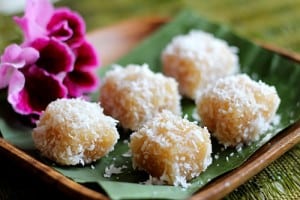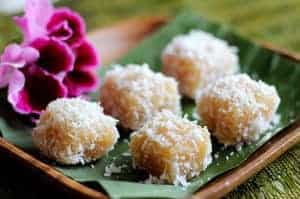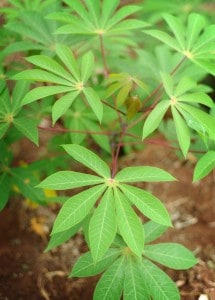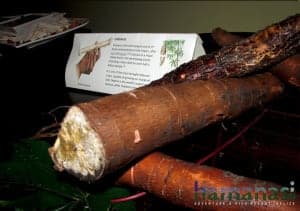
Ingredients:

At Hamanasi we are aware many of our guests have special dietary requirements, from low sugar and nut allergies, vegetarian to gluten free diets. We want all of our guests to be able to sample to delights of our kitchen and bakery so we use native local produce to substitute certain items that may be incompatible with the dietary requirements. One of these substitutes is cassava, which we use as a substitute when cooking and preparing food for guests with a gluten free diet.

Native to Brazil and the tropical areas of the Americas, Cassava (also know as manioc, tapioca or yuca) is widely grown all over Latin America and the Caribbean, as well as Africa and the South Pacific. A root vegetable with a brown fibrous skin and a fleshy white interior, it has been around since long before the arrival of Columbus. Cassava provided a stable source of food to the Taino, Carib and Arawak populations, especially in the form of cassava bread. While there is evidence of manioc pollen in the Gulf of Mexico lowlands dating to 4600B.C., the earliest evidence of cassava cultivation comes from a 1,400 year old Maya site in El Salvador.
Cassava is the third largest source of food carbohydrates in tropical and sub-tropical regions helping to provide a basic diet to over half a billion people, mainly thanks to its ability to grow under strenuous conditions such as in areas of low rainfall and nutrient low soils.

Once harvested cassava needs to be washed and peeled before it is used, but it can be used in so many ways. When cooked properly to detoxify it, the soft boiled root has a delicate flavor and can be used to replace potatoes in many ways, including as an accompaniment to meat, as a flour in dumplings and gravies, or even fried as chips. Cassava can also be made into a sweeter choice as a crepe or a cake. This typically involves grating the cassava and mixing it with coconut milk or even fresh grated coconut and steaming it.
Cassava is a food with a long list of health benefits. Cassava is very rich in many minerals that are beneficial such as calcium, potassium, iron, phosphorus and manganese. As well as being rich in fibre, it is also rich in carbohydrates, making it a perfect dietary addition for a highly active lifestyle. Along with being gluten free, cassava is high in its levels of saponins, which are a phytochemical responsible for helping to lower the levels of unhealthy cholesterol in the blood stream.
So all the arrows point to cassava being a healthy choice of vegetable for any diet.